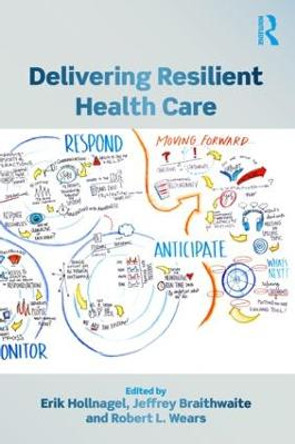Description
Safety-I is defined as the freedom from unacceptable harm. The purpose of traditional safety management is therefore to find ways to ensure this 'freedom'. But as socio-technical systems steadily have become larger and less tractable, this has become harder to do. Resilience engineering pointed out from the very beginning that resilient performance - an organisation's ability to function as required under expected and unexpected conditions alike - required more than the prevention of incidents and accidents. This developed into a new interpretation of safety (Safety-II) and consequently a new form of safety management.
Safety-II changes safety management from protective safety and a focus on how things can go wrong, to productive safety and a focus on how things can and do go well. For Safety-II, the aim is not just the elimination of hazards and the prevention of failures and malfunctions but also how best to develop an organisation's potentials for resilient performance - the way it responds, monitors, learns, and anticipates. That requires models and methods that go beyond the Safety-I toolbox. This book introduces a comprehensive approach for the management of Safety-II, called the Resilience Assessment Grid (RAG). It explains the principles of the RAG and how it can be used to develop the resilience potentials. The RAG provides four sets of diagnostic and formative questions that can be tailored to any organisation. The questions are based on the principles of resilience engineering and backed by practical experience from several domains.
Safety-II in Practice is for both the safety professional and academic reader. For the professional, it presents a workable method (RAG) for the management of Safety-II, with a proven track record. For academic and student readers, the book is a concise and practical presentation of resilience engineering.
About the Author
Erik Hollnagel (Ph.D., psychology) is Professor at the Department of Regional Health Research, University of Southern Denmark and Chief Consultant at the Centre for Quality, Region of Southern Denmark. Erik is also Adjunct Professor, Central Queensland University, Australia, Visiting Professorial Fellow, Macquarie University, Australia, Visiting Fellow, Institute for Advanced Study, Technische Universitat Munchen (Germany), and Professor Emeritus at Ecole des Mines de Paris (France) and the University of Linkoeping (Sweden). Since 1971 he has worked at universities, research centres, and industries in several countries and with problems from many domains, including nuclear power generation, aerospace and aviation, air traffic management, software engineering, healthcare, and land-based traffic. His professional interests include industrial safety, human factors, resilience engineering, systems theory, and functional modelling. He has published more than 350 papers and authored or edited 20 books.
Reviews
"A truly original world-class thinker, Hollnagel's work should be heeded by every safety and health professional. It's hard going at times, as he profoundly challenges the traditional ways in which we understand and manage safety. But he does offer a new vision that is potentially very valuable to practitioners. In particular, Safety II could help us to revolutionise how we view accident and incident data (and the use we make of this information) and position ourselves as risk managers, not just as safety and health specialists.
This approach could also give us powerful new leverage with directors and senior leaders - by changing the agenda from how we can meet the minutiae of safety and health law to how we can best work together to ensure our organisations survive and thrive."
Paul Smith MA CFIOSH, IOSH Magazine and former Health & Safety Executive inspector
Book Information
ISBN 9781138708914
Author Erik Hollnagel
Format Hardback
Page Count 130
Imprint Routledge
Publisher Taylor & Francis Ltd
Weight(grams) 220g






